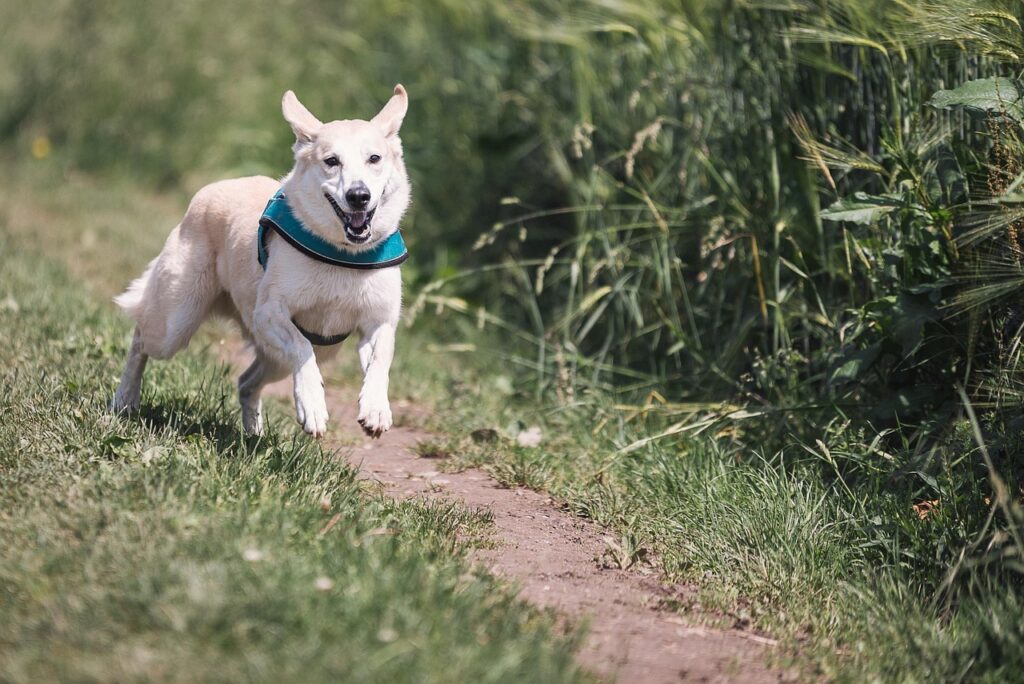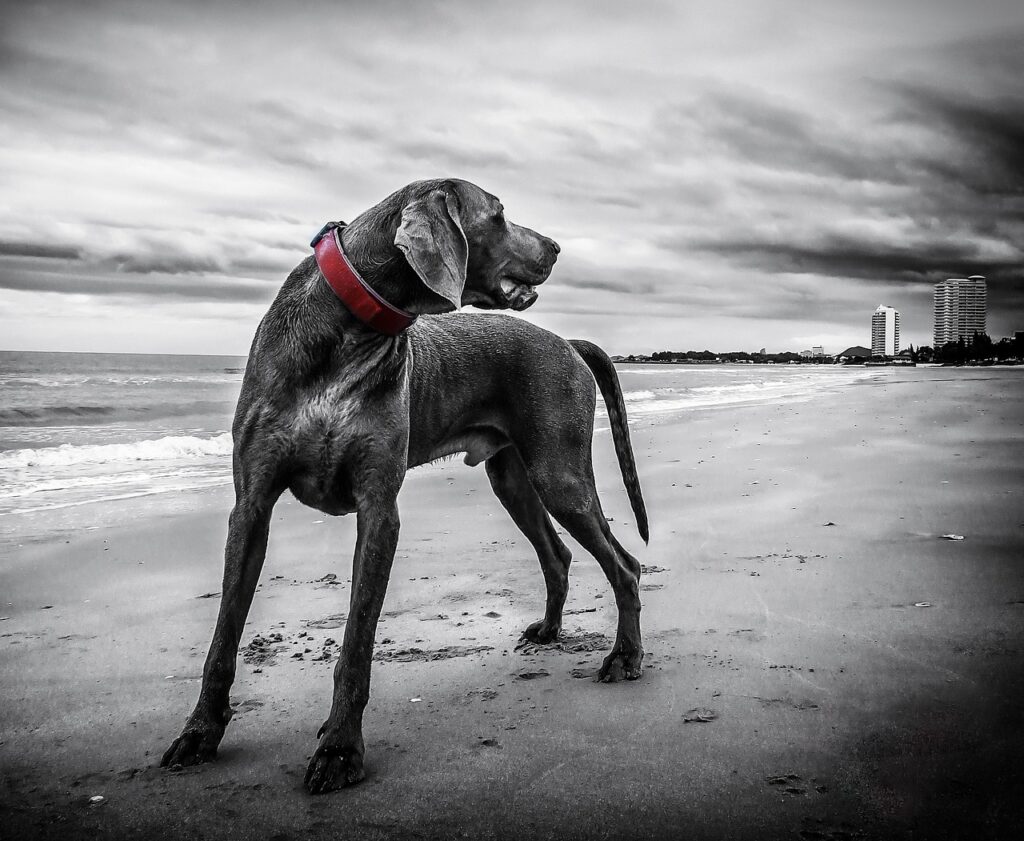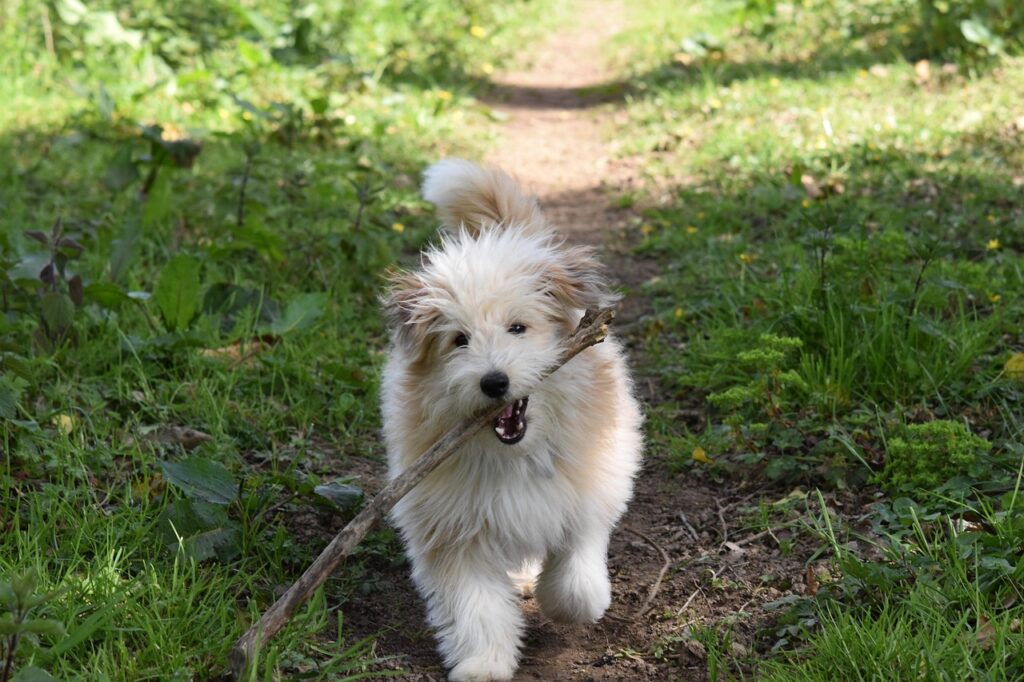You love your dog a lot, right? You watch how your dog walks, runs, jumps, and plays. But one day, something weird happens. Your dog starts limping. It walks funny or slow. But wait — it doesn’t cry, doesn’t bark in pain, and still wants to chase its ball. You start thinking, “Hmm… my dog is limping but shows no sign of pain. What’s going on here?”
It’s normal to feel worried. Limping means something is not right, even if your dog acts okay. Dogs are good at hiding pain, so it’s up to you to find out what’s wrong.
Don’t worry! In this blog, I’ll explain everything in very easy words. You’ll learn why your dog might limp without looking hurt. I’ll also show you some dog leg pain home remedies you can try to help your furry friend feel better.
Let’s take it step by step — and help your dog walk happy again!

What Does Limping Mean in Dogs?
Limping means your dog is not walking in a normal way. Maybe it avoids putting full weight on one leg, or it drags one foot a little, or it hops on three legs. It might only limp sometimes, like after resting, or all the time.
But here’s the tricky part: dogs are very good at hiding pain. That’s why your dog might look fine, wagging its tail and eating food, even if something hurts. This is normal dog behavior.
Why My Dog Is Limping But Shows No Sign of Pain – Common Reasons
Here are the most common causes why your dog may limp with no signs of crying or pain:
1. Mild Sprain or Strain
Just like you can twist your ankle and feel a little sore, your dog can also get a small sprain or pulled muscle. It may hurt a bit, but not too much. Your dog might walk weird for a few hours or days but still act normal.
What to do:
Let your dog rest. Don’t let it run or jump too much. Give it 2-3 days to heal. If limping doesn’t stop, visit the vet.
2. Something Stuck in the Paw
Sometimes, a small rock, thorn, or even glass can get stuck in your dog’s paw pad. Your dog won’t scream but will limp to avoid putting weight on it.
Check:
Pick up the foot and look closely. Check between toes too. See if there’s anything sharp or weird.
What to do:
Gently remove it using tweezers. Wash the paw with clean water. If there’s blood or swelling, go to the vet.
3. Nail Problems
If your dog’s nails are too long or broken, it can hurt to walk. A cracked nail can be painful, even if your dog doesn’t cry.
What to do:
Trim your dog’s nails regularly. If one nail looks red, swollen, or twisted, visit the vet.
4. Old Injury Acting Up
If your dog had an injury in the past, it might come back once in a while. Like when it rains or your dog plays too hard.
What to do:
Keep your dog’s playtime short and smooth. If limping keeps coming back, ask the vet about long-term care.
5. Hip or Joint Problems (Like Arthritis)
This is more common in older dogs or big breeds. Sometimes bones rub each other because of weak joints. Your dog won’t scream but will limp more when tired.
Signs to look for:
- Limping after sleeping
- Slow to stand up
- Doesn’t want to climb stairs
What to do:
Talk to your vet. They may suggest joint supplements or special food.
6. Paw Pad Burns or Cuts
If your dog walked on hot roads or sharp stones, the bottom of its feet might get burned or cut. This hurts, but dogs may not show it much.
What to do:
Check the paws for redness or cracks. Wash gently and avoid outdoor walks until it heals.
7. Tick Bites or Lyme Disease
Ticks carry bad germs like Lyme disease. This can make your dog’s joints swollen. It may not cry but will start limping on different legs on different days.
What to do:
Check your dog for ticks, especially after forest walks. If you see weird limping plus tiredness, visit the vet fast.
8. Growing Pains (In Puppies)
Big dog breeds like Labradors or Great Danes sometimes limp during puppy growth. Their bones grow too fast and it causes small pain. It goes away later.
What to do:
Give your puppy proper food. Ask your vet if you should give calcium or not.
9. Nerve Damage or Spinal Issues
Sometimes the problem is not in the leg but in the back. Nerves that control the leg may get pressed due to spine problems.
Signs:
- Limping with dragging
- Unsteady walking
- Weak legs
What to do:
This is serious. Visit your vet and ask for X-rays or scans.
10. Behavioral or Habitual Limping
Yes, dogs can also “act” sometimes. Maybe it limped once due to a thorn, but now it limps just because it got used to walking like that.
What to do:
Observe carefully. If it eats, plays, and runs normally, it may just need retraining.
How to Check Your Dog at Home When It Limps
When you say “my dog is limping but shows no sign of pain,” you can do some safe checks at home:
- Start from paw to shoulder or hip – touch each part gently.
- Press paw pads lightly – watch if your dog pulls back.
- Move each joint slowly – elbow, wrist, knee, hip.
- Feel for swelling – is one leg bigger or warmer?
- Look for cuts or thorns – check between toes and under paws.
If your dog growls, pulls back, or licks one area a lot, there may be pain.
What You Should Do If Your Dog Is Limping But Shows No Sign of Pain
Here’s a simple step-by-step guide:
Step 1: Rest
Keep your dog calm. No running, no jumping, no climbing stairs for 2-3 days.
Step 2: Check the Leg
Follow the steps above. Look at paw, nails, and joints.
Step 3: Use Ice (If Swollen)
Wrap ice in a towel and gently place on the swollen area for 10-15 minutes. Do it 2-3 times a day.
Step 4: No Human Medicine
Never give your dog painkillers made for humans. No paracetamol, no aspirin, nothing unless your vet says so.
Step 5: Track Limping
Write down when it limps, how bad it is, and how long it lasts. This helps the vet a lot.
Step 6: Visit the Vet (If It Doesn’t Go Away)
If the limp lasts more than 3 days or gets worse, it’s time for a vet visit. Even if your dog looks happy.

When to Worry: Red Flags
Call your vet soon if:
- Limping gets worse every day.
- Dog stops eating.
- Dog cries or growls when you touch the leg.
- Dog won’t stand or use the leg at all.
- Dog drags its back legs.
These can mean something serious like fracture or nerve problem.
How Vets Treat Limping With No Pain Signs
Your vet may:
- Do X-rays to see bones.
- Give anti-inflammatory medicine for swelling.
- Suggest crate rest for 7–10 days.
- Use bandage or splint if there’s a sprain.
- Recommend surgery only in serious bone problems.
How You Can Prevent Limping in Dogs
To stop this from happening again:
- Trim your dog’s nails regularly.
- Don’t let your dog jump from high places.
- Use dog boots in summer or sharp trails.
- Give joint supplements if your vet says yes.
- Keep your dog at healthy weight.

Dog Leg Pain Home Remedies
You see your dog walking funny or limping a little. Maybe it doesn’t want to run or play like usual. You feel sad and ask, “What can I do for my dog’s leg pain at home?” Don’t worry. This guide is all about dog leg pain home remedies that are easy, safe, and can help your dog feel better.
You don’t need to rush to the vet right away for every little limp. Sometimes, you can do small things at home that work like magic. Let’s learn all about it — step by step.
1. Give Your Dog Rest
Why it helps:
When your dog plays too much or jumps too high, its legs can get sore — just like when you run a lot and your legs feel tired.
What to do:
- Keep your dog calm for 2–3 days.
- No jumping, no long walks.
- Let your dog lie down in a soft bed.
Extra Tip:
Put your dog’s bed in a quiet place so it doesn’t get excited seeing people or other pets.
This is one of the first and most helpful dog leg pain home remedies you should try.
2. Apply a Cold Compress (First 48 Hours)
Why it helps:
If there’s swelling or sudden pain, a cold pack helps reduce swelling and eases pain.
What to do:
- Wrap ice in a clean cloth or towel.
- Gently press it on the sore leg for 10–15 minutes.
- Do this 2–3 times a day for the first 2 days.
Don’t do this:
Don’t put ice directly on skin. Always use a towel.
3. Warm Compress (After 2–3 Days)
Why it helps:
If the pain stays for more than 2 days, warm compresses help muscles relax and improve blood flow.
What to do:
- Soak a towel in warm (not hot!) water.
- Wring it out and place it gently on the leg.
- Do this for 10–15 minutes, 2–3 times daily.
Many dog parents use this as one of their go-to dog leg pain home remedies after a couple of days of rest.
4. Gentle Leg Massage
Why it helps:
Massaging helps blood move and makes the sore muscles feel relaxed.
What to do:
- Use your fingers to rub the sore leg gently.
- Start from the paw and move up.
- Do slow, soft circles.
- If your dog pulls back or growls, stop immediately.
Pro Tip:
Play calm music or talk softly while massaging.
5. Turmeric Paste (Natural Anti-inflammatory)
Why it helps:
Turmeric has curcumin, which fights swelling and pain naturally.
How to make:
- Mix ½ teaspoon turmeric powder + 1 teaspoon coconut oil + pinch of black pepper.
- Make a thick paste.
How to use:
- Rub a small amount on the dog’s leg (where it’s sore).
- Avoid open wounds.
- Make sure your dog doesn’t lick it off — you can use a cone if needed.
This natural remedy is one of the safest and most common dog leg pain home remedies found in Indian households.
6. Epsom Salt Soak
Why it helps:
Epsom salt helps relax muscles and reduce swelling.
What to do:
- Fill a shallow tub with lukewarm water.
- Add 1–2 tablespoons of Epsom salt.
- Let your dog’s paw or leg soak for 10 minutes.
- Dry well after soaking.
Tip:
Only do this if the dog is calm. Some dogs don’t like water.
7. Use a Soft Leg Wrap (If Vet Approved Before)
Why it helps:
A soft wrap gives support to a sore leg and prevents more injury.
What to do:
- Use a self-adhesive bandage.
- Wrap the sore leg gently—not too tight!
- Remove it every few hours to check for swelling or irritation.
Important:
If your dog seems upset or licks the bandage a lot, remove it.
This one’s an underrated method in the list of dog leg pain home remedies.
8. Keep Nails Trimmed
Why it helps:
Long nails make your dog walk weird and hurt its legs over time.
What to do:
- Use dog nail clippers or a nail grinder.
- Trim a little bit at a time.
- Never cut too deep (you might hit the “quick” – that hurts!).
Bonus Tip:
Walk your dog on concrete paths to help nails file naturally.
9. Natural Supplements for Joints (Ask Vet First)
Why it helps:
Some herbs and oils help reduce pain and keep joints strong.
Home remedies include:
- Fish oil (Omega-3s) – good for joints
- Glucosamine + chondroitin – helps rebuild cartilage
- Pumpkin or sweet potato – tasty and anti-inflammatory
What to do:
Ask your vet if these are safe for your dog’s age and size.
Adding joint-support foods is one of the best dog leg pain home remedies for senior dogs.
10. Keep Your Dog at Healthy Weight
Why it helps:
More weight = more pressure on legs = more pain.
What to do:
- Feed the right amount.
- Avoid table scraps.
- Give healthy treats like carrots or cucumber.
11. Use Non-Slip Mats at Home
Why it helps:
Slippery tiles or floors can make your dog’s legs hurt more when walking or getting up.
What to do:
- Use rubber mats or rugs.
- Help your dog feel more secure while walking.
12. Keep It Calm and Happy
Why it helps:
Stress makes pain feel worse — even for dogs!
What to do:
- Pet your dog often.
- Speak in a calm voice.
- Give chew toys or bones to keep it happy during rest time.
Keeping your dog stress-free is a secret ingredient in all dog leg pain home remedies.

When to Call the Vet (Important Signs)
Even if you try home remedies, some signs mean you should visit a vet soon:
- Limping doesn’t go away after 3 days
- Dog cries or growls when touching the leg
- Dog can’t stand up at all
- Leg is very swollen or looks twisted
- Fever, tiredness, or not eating
Never give human pain pills like paracetamol, aspirin, or ibuprofen — these are dangerous for dogs.
Conclusion: My Dog Is Limping But Shows No Sign of Pain
Now you know some simple and helpful dog leg pain home remedies that can really make a difference. Things like giving your dog rest, using ice packs or warm towels, soaking in Epsom salt water, or trying turmeric can bring relief right at home.
But always remember — these remedies work best for small problems. If your dog is limping but shows no sign of pain, don’t just ignore it. Dogs are very good at hiding pain. Limping is always a sign that something is not okay, even if your dog looks fine and wags its tail.
So be a good friend to your pup. Try gentle home remedies first. But if limping continues, gets worse, or your dog seems sad, please visit the vet. You are your dog’s voice and superhero. A little love and care from you can help your dog walk, run, and play again.
Share To Help